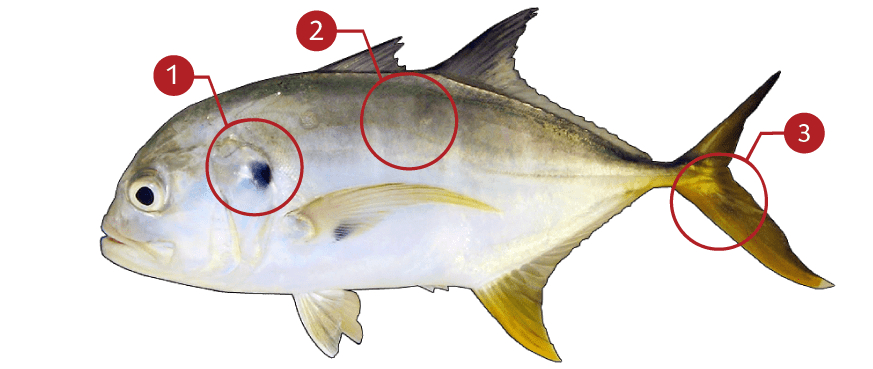CREVALLE JACK
How to identify a Pacific Crevalle Jack
This eastern Pacific species is identical in most respects to the crevalle jack (Caranx hippos) of the western Atlantic, including the characteristic black spot or blotch on the operculum (gill cover) and on the pectoral fins. The Pacific species is distinguished externally only by the presence of a larger maximum number of scutes (up to 42, as opposed to 25-35 in C. hippos). This and other differences documented by scientists have led to classification of the Pacific crevalle jack in recent years as a separate and valid species.
Where to catch Pacific Crevalle Jack
The crevalle jack inhabits the tropical and temperate waters of the Atlantic Ocean, ranging extensively along both the eastern American coastline and the western African and European coastlines.[5] In the western Atlantic, the southernmost record comes from Uruguay, with the species ranging north along the Central American coastline, and throughout the Caribbean and many of the numerous archipelagos within. The species is found throughout the Greater Antilles, however it is absent from the leeward Lesser Antilles, with its distribution being patchy throughout other Caribbean archipelagos.[10] From the Gulf of Mexico, its distribution extends north along the U.S. coast and as far north as Nova Scotia in Canada, also taking in several northwest Atlantic islands. The crevalle jack is also known from Saint Helena Island in the southern Atlantic Ocean.
IDENTIFICATION

| |
A characteristic black spot or blotch on the operculum (gill cover) and on the pectoral fins |
| |
Color ranges from brassy green to blue or bluish-black dorsally, becoming silvery white or golden ventrally |
| |
The caudal fin is golden with the lower lobe often brighter yellow than the upper, with both lobes having a black trailing edge |
TARGET AREAS
|
|
Acknowledgements: We thank TAKEMEFISHING.org (www.takemefishing.org), Wisconsin Department of Natural Resources, Indiana Department of Natural Resources for their contributions to these FISH FACTS.

